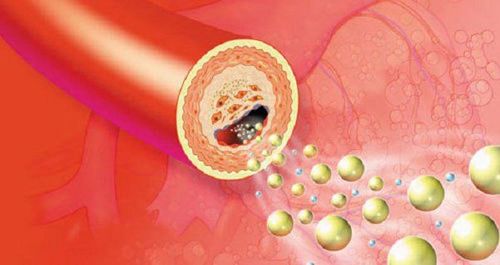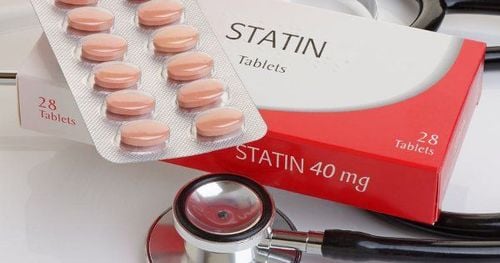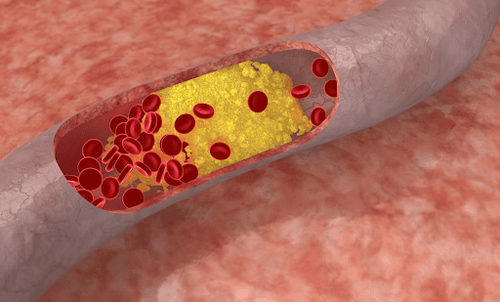This is an automatically translated article.
Cholesterol is a type of fat that is produced by the body and found in some foods. The body needs cholesterol to function and grow, but too much cholesterol increases the risk of heart attack or stroke, because excess cholesterol causes atherosclerosis.1. Overview of cholesterol
Total cholesterol consists of two components, low-density lipoproteins (LDL) and high-density lipoproteins (HDL).LDL is considered "bad" cholesterol because it causes atherosclerosis and increases the risk of cardiovascular events. HDL is considered "good" cholesterol because it helps reduce the risk of cardiovascular disease, so the higher the HDL level, the better.
Besides that, another factor is triglycerides. Triglycerides are also a type of fat but have a different role than cholesterol, the body uses triglycerides for energy.
The risk of cardiovascular disease is increased if triglyceride levels are high and HDL levels are low.
2. Recommended Adult Cholesterol Levels
The American Heart Association recommends that adults 20 years of age and older get their cholesterol levels checked every 4-6 years.
Cholesterol levels tend to increase with age, and men are at greater risk than women (women's risk increases after menopause).
According to recommendations published in the Journal of the American College of Cardiology in 2018, cholesterol levels in adults are classified as follows (unit: mg/dL):
3. Recommended cholesterol levels in children
Children who are physically active, have a healthy diet, are not overweight, and don't have a family history of high cholesterol are less likely to have high cholesterol.
It is now recommended that children have cholesterol levels checked between the ages of 9 and 11, and between the ages of 17 and 21 (if the child has risk factors, such as diabetes or a family history of high cholesterol). , should be tested between the ages of 2 and 8, and between the ages of 12 and 16).
According to the recommendations of the Journal of the American College of Cardiology, cholesterol levels in children are classified as follows (unit: mg/dL):
4. How to prevent high cholesterol, maintain recommended cholesterol levels
Practicing a healthy lifestyle is an effective way to prevent high cholesterol and maintain recommended cholesterol levels. This is an easy measure, can be done at any age, including:Regular exercise: both helps to lose weight and helps increase HDL cholesterol levels. Should exercise 30 - 60 minutes a day with sufficient intensity. Eat plenty of fiber: eat plenty of fiber-rich foods (like eating whole grains instead of white bread). Use healthy fats: The healthy fats found in olive oil, avocados and nuts, these fats do not raise LDL cholesterol levels. Limit cholesterol intake: should limit the use of foods with a high concentration of saturated fat such as cheese, whole milk, high-fat red meat,... Do not smoke: smoking reduces HDL cholesterol levels.

hút thuốc lá làm suy giảm nồng độ HDL cholesterol
Outpatient management of diabetes - hyperlipidemia at Vinmec International General Hospital provides male and female customers of all ages with a process of general testing for HDL, LDL, and Triglycerid cholesterol levels. ..... For children first screened at about 10 years of age, try again at puberty if puberty is early. If results are normal, try again every 2 years. Based on the results, the doctor will make a diagnosis and advice to improve health.
Please dial HOTLINE for more information or register for an appointment HERE. Download MyVinmec app to make appointments faster and to manage your bookings easily.
Article referenced source: healthline.com












